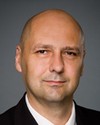To clarify, in concept, these hubs could exist on paper only. I talked about the agreements that need to be in place with a host nation. Then you work into logistical support arrangements and then you work down to contracting arrangements. You could have a range of capability that existed on paper only and not require anything.
If a hub existed in a certain country and nothing was happening, you would probably just maintain that relationship by refreshing the paper with staff visits. Doing that is not very expensive. As named operations or as focus for the Government of Canada starts to work or be directed somewhere, that, of course, is where you would potentially use and start to occupy a hub, but I'd say they're very scalable.
As I referred in my earlier comments, Spangdahlem, for instance, today is four people. It's not very demanding in terms of people, but it's based on the levels of activity. At one point in time, Spangdahlem, Germany, was up in the range of 170, when we were doing a full range of sustainment, rotation, and third-location decompression all from that region. I highlight that to say that it is expandable, but it does not presuppose that there have to be people at those locations, once they are established. Our manning of those is very much in response to operational activities.





